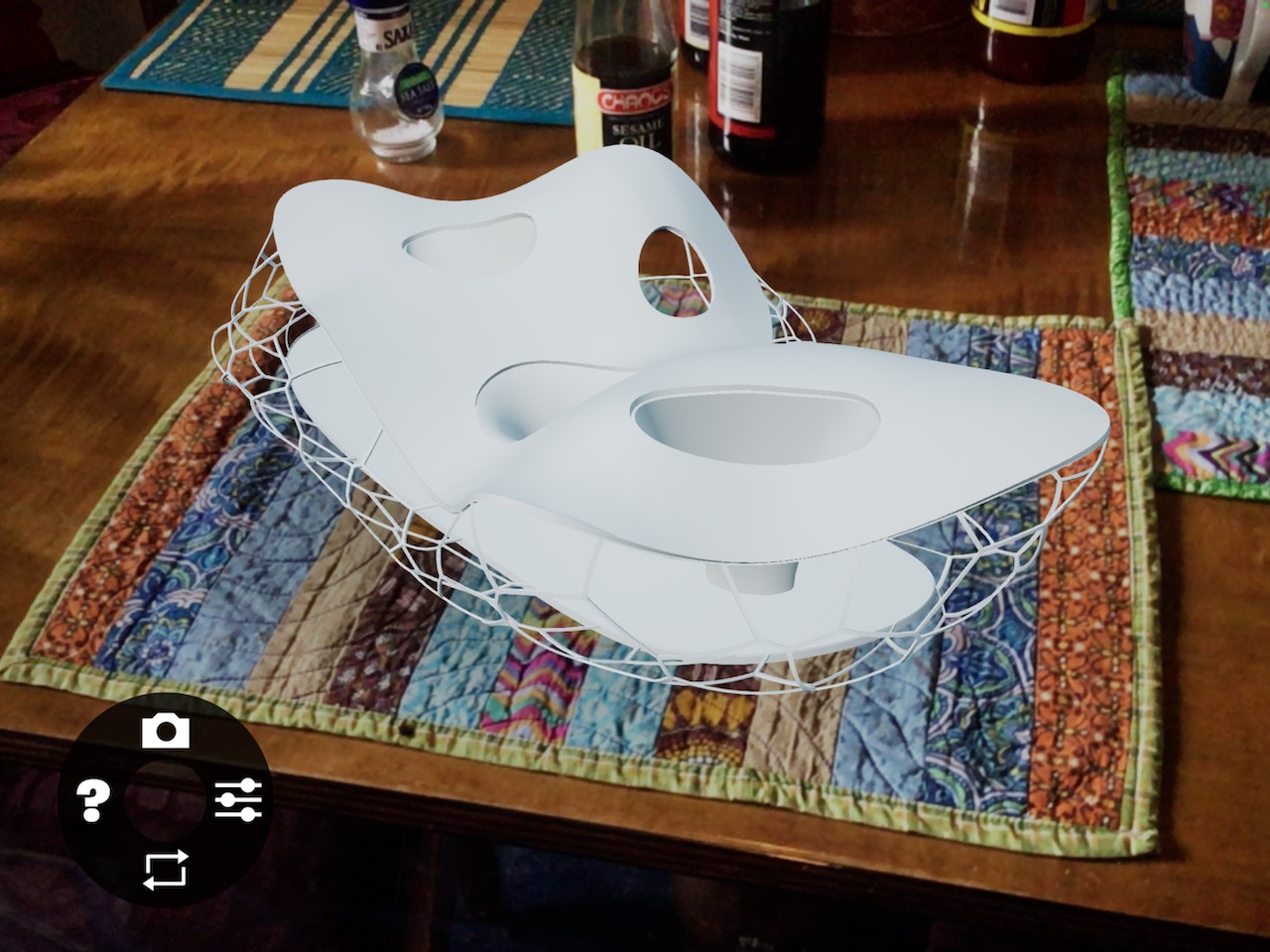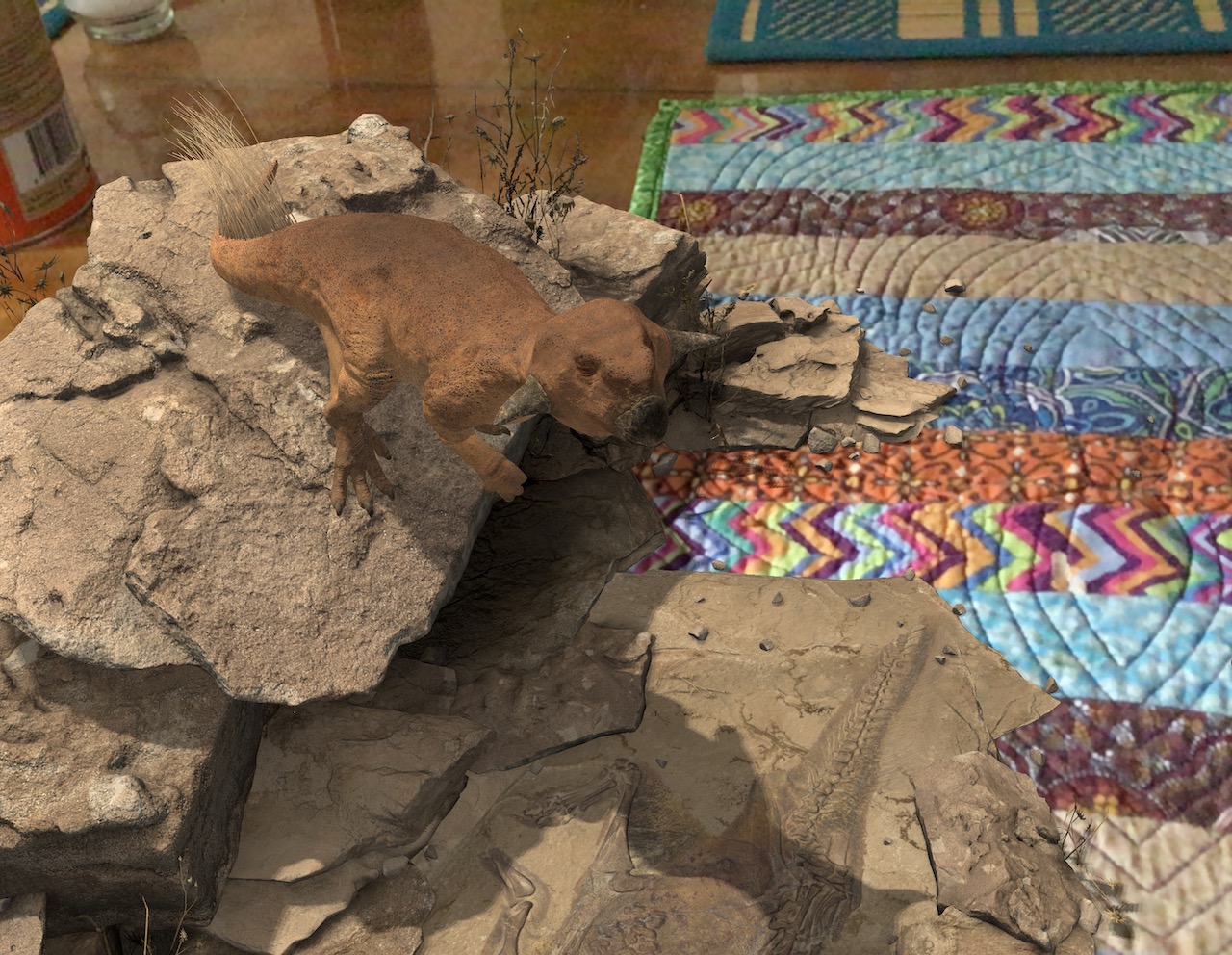Unreal Engine is a robust platform for exploring how to develop applications in XR. So, a few weeks ago I worked through the documentation and various tutorials for developing an Augmented Reality app using Unreal Engine (UE) 5.1.
It’s confusing to say the least – as there is lots of advice available coming from different quarters, and the processes of compilation and deployment are quite complicated. Unnecessarily complicated, in my opinion – but I understand why such requirements are involved.
UE comes with an AR Template that can cross-compile for both iOS and Android. My initial thought – for ease of use – was to go and buy a cheapish Android device (tablet or phone) and deploy locally on that. But of course it isn’t that simple – there are a whole bunch of technical requirements for the platform e.g. Android OS version, CPU, GPU etc – and these must be matched with the correct Android SDK. So, a whole lot of time required to figure all that stuff out – surely there is an easier way?
There is, to a degree, on iOS, as the range of models is much more limited, and iOS seems more standardised and slightly simpler to target – despite a whole bunch of security requirements, such as developer signing certificates. Plus I already have a few iOS devices around to test on – my iPhone XR and an IPad Pro.
The next problem is that I require a recent Apple computer on which to run UE and XCode in a recent version of MacOS. These days, as I mainly develop using Windows 11 (for graphics) and Ubuntu Linux 22.04 LTS (for machine learning), this presented a problem. I have a bunch of MacPro 5,1 towers that I’ve kept as a render farm – but the most up-to-date one is a mid-2010 model, with a metal-capable Radeon RX580 GPU that was running MacOS 10.14 Mojave. This was the last OS officially supported for the ‘Classic’ Mac Pro desktop (cMP) in 2018, last updated in 2019. Lots of software was becoming ‘non-updateable’ on it, not only because it is a 13-year-old computer, but because Mojave was non-longer officially supported by Apple.
So what to do?
Fortunately there is a community of hackers who have developed work-arounds for supporting newer OS versions on unsupported machines, ranging from dosdude1’s easy-to-use MacOS patchers, to OCLP, to Martin Lo’s cMP OpenCore package. Having read around the subject and having contemplated updating my old machines for the last few years (!), I decided to take the plunge and use Martin Lo’s package, as it is specifically targeted for Mac Pro ‘cheese-graters’ like mine – with minimal patching of the underlying OS (unlike OCLP) – it is principally a modified bootloader and relatively easy to install and uninstall, without bricking your machine. There’s even a very friendly and helpful facebook group for technical discussions.
Happily it’s worked perfectly. That means I can develop as usual in Windows and use my ancient machine to deploy on iOS devices. So – I’ve got the UE 5.1 AR Template Demo compiled on MacOS Monterey 12.6.1 and XCode 14.2, running on my old cheese-grater cMP – and installed on my 2015 iPad Pro running iOS 16.3. It runs fine. Problem solved.
I have no loyalty to any particular platform - they're just systems with which to make things, and they each have their strengths and weaknesses. If possible I try and avoid vendor lock-in by exploring opensource approaches - but some degree of it seems to be unavoidable. I'm all for open standards and cross-platform compatibility. Having said this UE is my current engine of choice (though I keep abreast of Unity and Godot), and it works well enough with a broad opensource/source-available ecosystem.
Here’s a shot of it showing the default architectural model, on a placemat on a kitchen table. It works fine and has been useful for learning – but looks kind of clunky.

The following is a screenshot of the impressive AR app by Handbuilt Creative – demonstrating a photorealistic animated Psittacosaurus. There is obviously a lot of work behind this, and it indicates the level of detail that can be achieved. Of course, I would expect more recent devices would be capable of a lot more – but I don’t have the budget to just pop out and buy new tech, unfortunately, so it’s a matter of working with what I have available.

Things have progressed a great deal from here (thanks to a bunch of developments announced at GDC 2023)- I’ll cover them in a future post.
Here’s a summary of the steps to get UE 5.1 AR working, courtesy of ChatGPT:
Provisioning for iOS
If you want to distribute your iOS app made with Unreal Engine 5.1 through the Apple App Store, you will need to create a new certificate and provisioning profile for each version of your app. This is because each version of your app is treated as a separate and distinct application by Apple.
To publish your app to the App Store, you will need to create an App ID, a Distribution Certificate, and a Provisioning Profile for each version of your app. You will also need to configure your Unreal Engine 5.1 project to use these credentials for building and packaging your app.
Here are the steps you need to undertake on your Apple Developer account to create the necessary certificates and provisioning profiles for your Unreal Engine 5.1 app, as well as how to enter these details into Unreal Engine:
- Create an App ID:
- Log in to your Apple Developer account.
- Click on “Certificates, Identifiers & Profiles” in the sidebar.
- Click on “Identifiers” and then click the “+” button to create a new App ID.
- Choose “App IDs” from the “Register” dropdown menu, then select “iOS App” as the App ID type.
- Enter a name for your App ID and a unique Bundle ID (e.g. com.mycompany.myapp).
- Click “Continue” and review your App ID details, then click “Submit”.
- Create a Distribution Certificate:
- In the “Certificates, Identifiers & Profiles” section, click on “Certificates”.
- Click on the “+” button to create a new certificate.
- Select “App Store and Ad Hoc” as the certificate type and click “Continue”.
- Follow the instructions to create a certificate signing request (CSR) using Keychain Access on your Mac.
- Upload the CSR and click “Continue”.
- Download the distribution certificate and install it on your Mac by double-clicking the downloaded file.
- Create a Provisioning Profile:
- In the “Certificates, Identifiers & Profiles” section, click on “Provisioning Profiles”.
- Click on the “+” button to create a new profile.
- Select “App Store” as the provisioning profile type and click “Continue”.
- Choose the App ID you created in step 1 and click “Continue”.
- Choose the distribution certificate you created in step 2 and click “Continue”.
- Give your provisioning profile a name and click “Continue”.
- Download the provisioning profile and install it on your Mac by double-clicking the downloaded file.
- Enter the details into Unreal Engine:
- Open your Unreal Engine project and go to the “Project Settings” section.
- Under “Platforms”, select “iOS”.
- Enter your Bundle ID in the “Bundle Identifier” field.
- Click the “Import” button next to the “Certificate” field and select the distribution certificate you created in step 2.
- Click the “Import” button next to the “Provisioning Profile” field and select the provisioning profile you created in step 3.
- Save your settings and build your iOS app in Unreal Engine.
